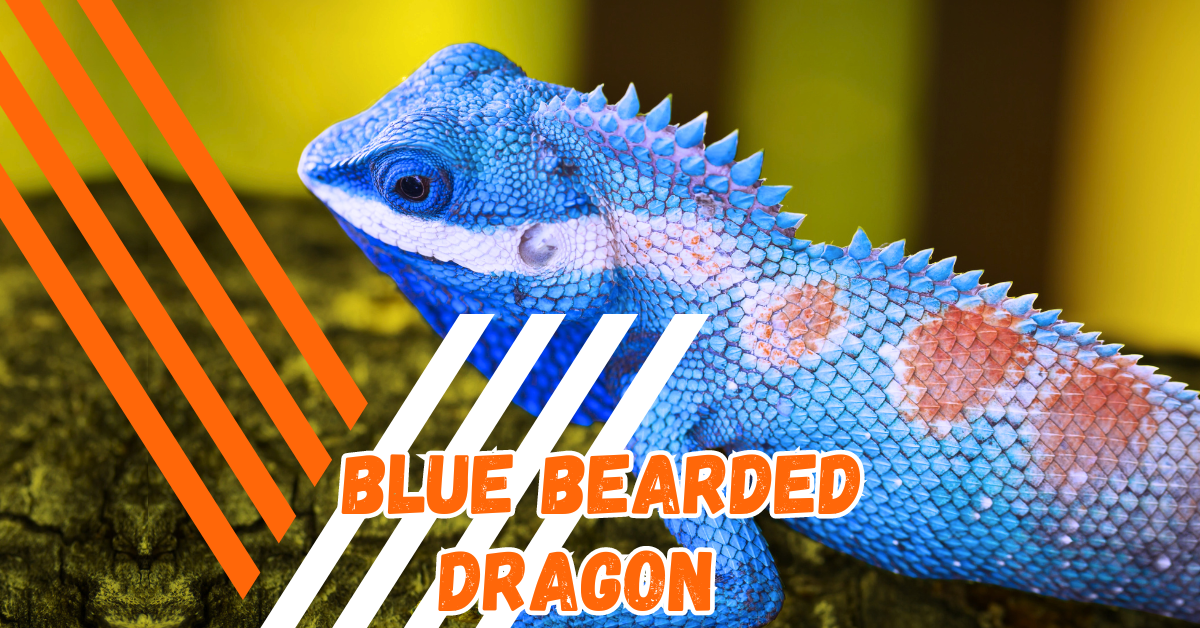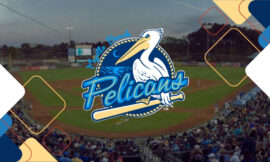1. What Is a Blue Bearded Dragon? A Complete Overview
Blue bearded dragons are a unique and rare color morph of the popular bearded dragon species. Known for their striking blue hues, these reptiles have captured the attention of reptile enthusiasts and pet owners around the world. The blue coloration occurs due to specific genetic traits, giving them a distinct appearance that sets them apart from traditional bearded dragons, which are typically brown, tan, or orange.
Despite their unusual color, blue bearded dragons share many similarities with other bearded dragon types in terms of care, behavior, and diet. These reptiles are docile, easy to handle, and relatively low-maintenance, making them an excellent choice for beginner reptile owners or those looking for a unique pet.
In this guide, we’ll explore everything you need to know about blue bearded dragons, from their genetic makeup and key characteristics to their care requirements and behavior.
2. Key Characteristics and Genetics of Blue Bearded Dragons
The blue bearded dragon gets its distinctive color from a genetic mutation that affects the pigmentation of its scales. While most bearded dragons exhibit earthy tones, the blue morph is caused by a lack of yellow pigmentation, allowing blue or gray hues to dominate. The level of blue can vary, with some dragons displaying a vivid blue color while others have a more subtle tint.
Key characteristics of the blue bearded dragon include:
- Color: Blue to grayish scales, often with a lighter underbelly.
- Size: Similar to regular bearded dragons, they typically grow between 16 to 24 inches in length.
- Lifespan: The lifespan of a blue bearded dragon is comparable to other morphs, usually ranging from 8 to 12 years with proper care.
- Temperament: Blue bearded dragons are known for their calm and friendly demeanor, making them easy to handle.
While their appearance is unique, their genetics don’t influence their overall health or behavior significantly compared to other bearded dragon morphs.
3. How to Care for a Blue Bearded Dragon: Essential Tips
Caring for a blue bearded dragon is similar to caring for any other bearded dragon species. Here are some essential care tips to ensure your blue bearded dragon thrives:
- Lighting: Provide your blue bearded dragon with proper UVB lighting for 10 to 12 hours per day. This is crucial for their health as UVB light helps them synthesize vitamin D3, which is necessary for calcium absorption.
- Temperature: The basking area should be kept between 95°F to 110°F (35°C to 43°C), while the cooler side of the enclosure should be around 80°F (26°C). Nighttime temperatures can drop to around 70°F to 75°F (21°C to 24°C).
- Humidity: Keep the humidity levels between 30% to 40%. High humidity can lead to respiratory issues, so it’s important to monitor this regularly.
- Handling: Blue bearded dragons are generally docile and enjoy being handled. Make sure to handle them gently and frequently to keep them accustomed to human interaction.
By following these care tips, your blue bearded dragon will stay healthy and happy for years to come.
4. Blue Bearded Dragon Habitat: Creating the Perfect Environment
Creating the perfect habitat for a blue bearded dragon is key to ensuring its health and well-being. Here’s how you can set up the ideal tank environment:
- Tank Size: A juvenile blue bearded dragon can be housed in a 20-gallon tank, but adults need a larger enclosure, ideally 40 to 75 gallons.
- Substrate: Use safe substrates like reptile carpet, paper towels, or tiles. Avoid loose substrates like sand, which can cause impaction if ingested.
- Decorations and Hides: Provide your blue bearded dragon with hides, climbing branches, and rocks to mimic their natural environment and encourage exercise.
- Basking Spot: Set up a basking area with a heat lamp to ensure your dragon can thermoregulate. The basking spot should be the warmest area in the tank.
- UVB Light: As mentioned, a high-quality UVB light is essential to mimic the sun’s natural rays.
Ensuring your blue bearded dragon’s habitat is properly maintained will help it thrive in captivity.
5. What Do Blue Bearded Dragons Eat? Diet and Nutrition Guide
The diet of a blue bearded dragon is no different from that of other bearded dragons. These omnivorous reptiles require a balanced diet of vegetables, insects, and occasional fruits. Here’s a diet guide for your blue bearded dragon:
- Insects: Juvenile dragons should be fed more protein, such as crickets, mealworms, and dubia roaches. As they grow, the amount of protein should be reduced, and their diet should consist more of vegetables.
- Vegetables: Leafy greens such as collard greens, mustard greens, and dandelion greens should make up the bulk of their diet as adults. You can also offer vegetables like squash and bell peppers.
- Fruits: Offer fruits like blueberries, strawberries, and apples occasionally, as they are high in sugar and should only be given as treats.
- Calcium and Vitamin Supplements: Dust their food with calcium powder and multivitamins to prevent metabolic bone disease.
Ensure that your blue bearded dragon has a varied and nutrient-rich diet to support its health and growth.
6. Blue Bearded Dragon Behavior and Temperament
One of the reasons blue bearded dragons make such great pets is their calm and friendly temperament. They are known for being docile and easy to handle, even for beginners. Here are some common behavioral traits of blue bearded dragons:
- Basking and Lazing: Bearded dragons love to bask under heat lamps and spend a good portion of their day doing so. They are not very active, but they do enjoy exploring their habitat occasionally.
- Communication: Blue bearded dragons communicate using various behaviors such as head bobbing, arm waving, and puffing out their beard. The color of their beard may darken when they feel threatened or stressed.
- Interaction with Humans: They typically enjoy being handled by their owners, and regular interaction helps them stay social and stress-free.
Their docile behavior makes blue bearded dragons a great companion for those looking for a low-maintenance yet interactive reptile.
7. Are Blue Bearded Dragons Rare? Understanding Their Genetics
Yes, blue bearded dragons are considered rare due to their unique color morph, which is a result of selective breeding. While bearded dragons are widely available in the pet trade, blue variants are less common and tend to be more expensive.
The blue coloration is caused by genetic mutations that reduce or eliminate the typical yellow pigments in their scales. As a result, these dragons display blue, gray, or purplish hues. The rarity of blue bearded dragons can make them highly sought after by reptile collectors and enthusiasts.
However, it’s important to purchase blue bearded dragons from reputable breeders who prioritize the health and well-being of their animals over color morphs.
8. Common Health Issues in Blue Bearded Dragons and How to Prevent Them
Like all reptiles, blue bearded dragons can experience certain health issues if not properly cared for. Here are some common health concerns and how to prevent them:
- Metabolic Bone Disease (MBD): This condition is caused by a lack of calcium or improper UVB lighting. Prevent MBD by providing calcium supplements and ensuring your dragon has access to UVB light for vitamin D3 synthesis.
- Respiratory Infections: High humidity or a dirty enclosure can lead to respiratory infections. Keep humidity levels low and clean the tank regularly to prevent this issue.
- Impaction: Using loose substrates like sand can cause impaction if ingested. To avoid this, use safe substrates like reptile carpet or paper towels.
By maintaining proper husbandry practices, you can prevent most common health problems in your blue bearded dragon.
9. How Much Does a Blue Bearded Dragon Cost? A Pricing Guide
Blue bearded dragons are more expensive than regular bearded dragons due to their rarity and unique appearance. The price of a blue bearded dragon can range anywhere from $200 to $500 or more, depending on factors such as age, health, and coloration.
In addition to the initial cost of the dragon, there are other expenses to consider, such as:
- Enclosure setup: Tank, lighting, substrate, and accessories can cost an additional $200 to $400.
- Food and Supplements: Ongoing costs for food, vitamins, and calcium supplements should be factored in.
- Veterinary Care: Bearded dragons require occasional check-ups and may need treatment for health issues, so it’s wise to set aside money for vet visits.
While blue bearded dragons may be pricier than other morphs, their striking appearance and calm temperament make them a worthwhile investment.
10. Frequently Asked Questions (FAQs) About Blue Bearded Dragons
- What is a blue bearded dragon?
A blue bearded dragon is a rare color morph of the bearded dragon, known for its unique blue or grayish coloration. - Are blue bearded dragons rare?
Yes, blue bearded dragons are considered rare and are the result of selective breeding for their unique coloration. - How long do blue bearded dragons live?
Blue bearded dragons typically live 8 to 12 years with proper care. - What do blue bearded dragons eat?
Blue bearded dragons are omnivores and eat a balanced diet of leafy greens, vegetables, insects, and occasional fruits. - How much does a blue bearded dragon cost?
Blue bearded dragons can cost anywhere from $200 to $500 or more, depending on their age, health, and rarity. - What kind of habitat do blue bearded dragons need?
Blue bearded dragons require a habitat with proper UVB lighting, a temperature gradient ranging from 80°F to 110°F, and a spacious tank with secure hides and basking spots. - Do blue bearded dragons need UVB lighting?
Yes, like all bearded dragons, blue bearded dragons require UVB lighting for at least 10 to 12 hours a day to synthesize vitamin D3 and absorb calcium. - How often should I feed a blue bearded dragon?
Juvenile blue bearded dragons should be fed insects daily, while adults can be fed insects every 2-3 days, along with daily servings of leafy greens and vegetables. - Can blue bearded dragons be kept as pets for beginners?
Yes, blue bearded dragons are known for their docile nature and ease of care, making them great pets for beginners. - Do blue bearded dragons have specific health concerns?
Blue bearded dragons face similar health concerns as other bearded dragon morphs, such as metabolic bone disease, respiratory infections, and impaction. Proper care, UVB exposure, and a balanced diet can help prevent these issues.
For more exciting blogs, visit our homepage Magzineco.
Conclusion
Blue bearded dragons are a fascinating and rare variation of the popular bearded dragon species. Their unique blue hues, friendly temperament, and manageable care requirements make them highly sought after by reptile enthusiasts. Whether you’re new to reptile keeping or a seasoned herpetologist, these stunning creatures are sure to captivate you.
By providing the right environment, a nutritious diet, and proper maintenance, you can ensure your blue bearded dragon lives a healthy, happy life for many years. While they may be more expensive than other bearded dragons due to their rarity, their beauty and peaceful nature make them a worthwhile investment.
With this guide, you now have the essential knowledge needed to care for, house, and appreciate your blue bearded dragon, ensuring a long-lasting bond with your vibrant pet.




